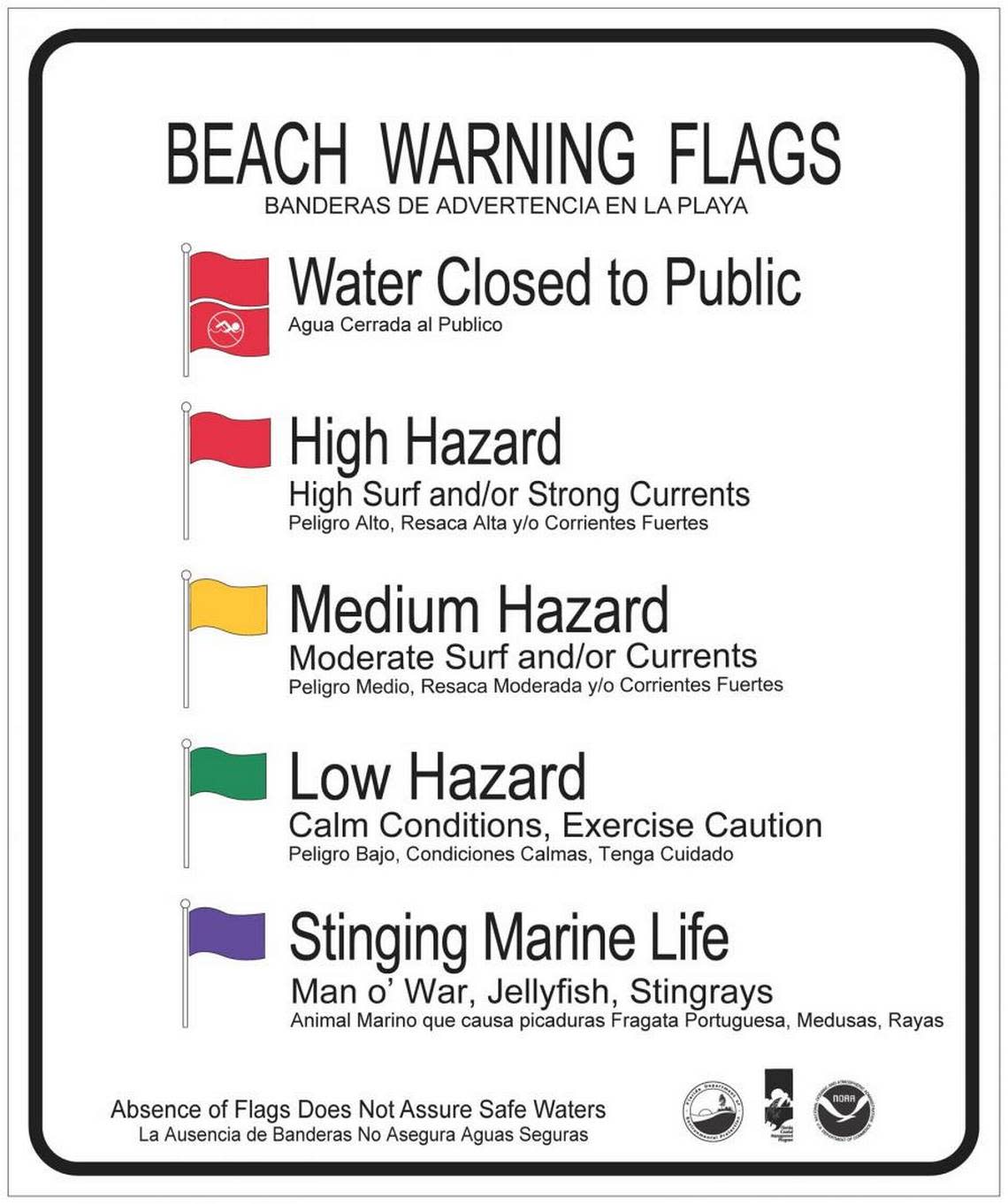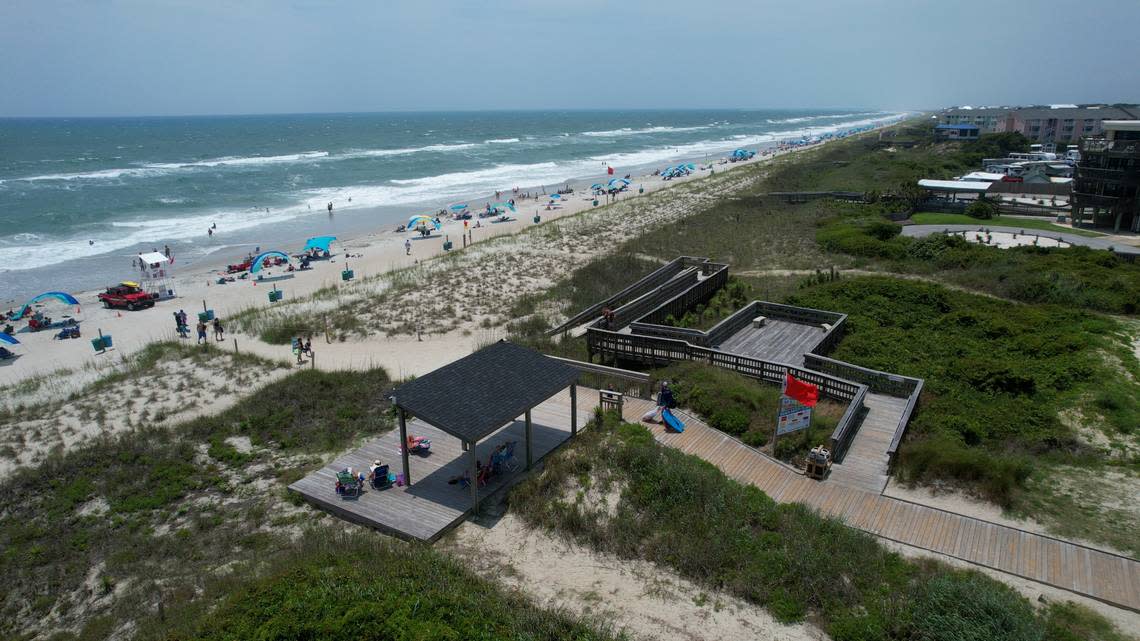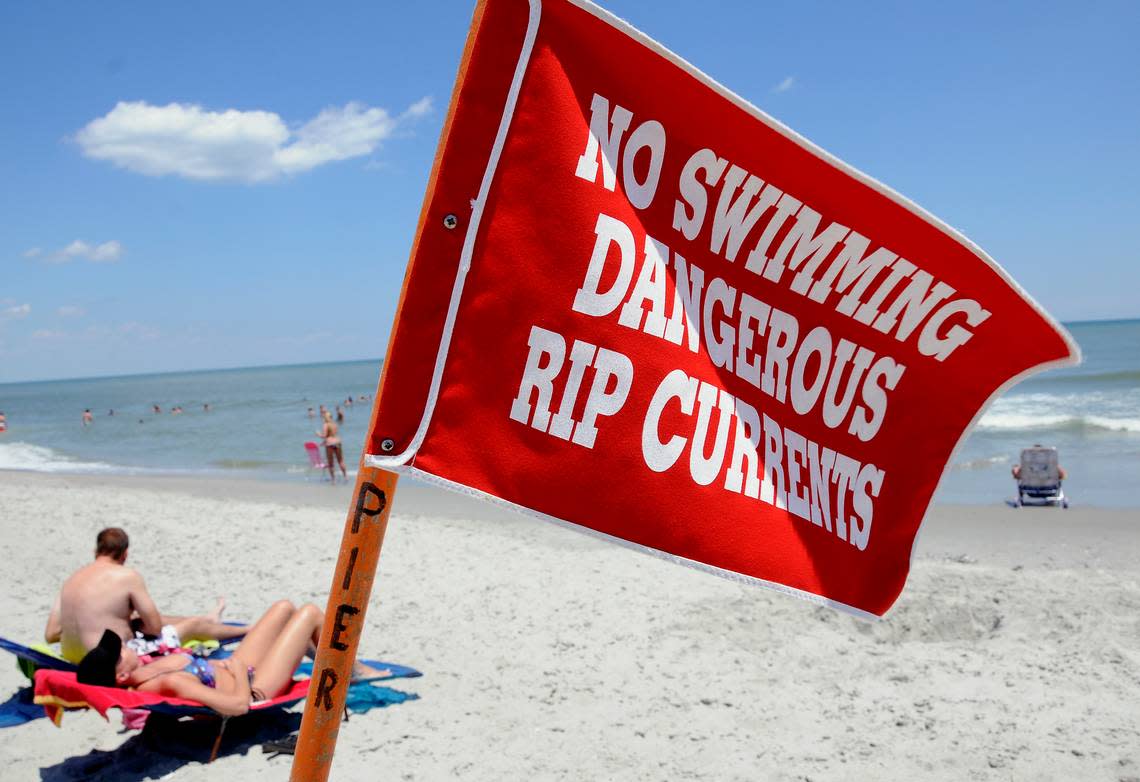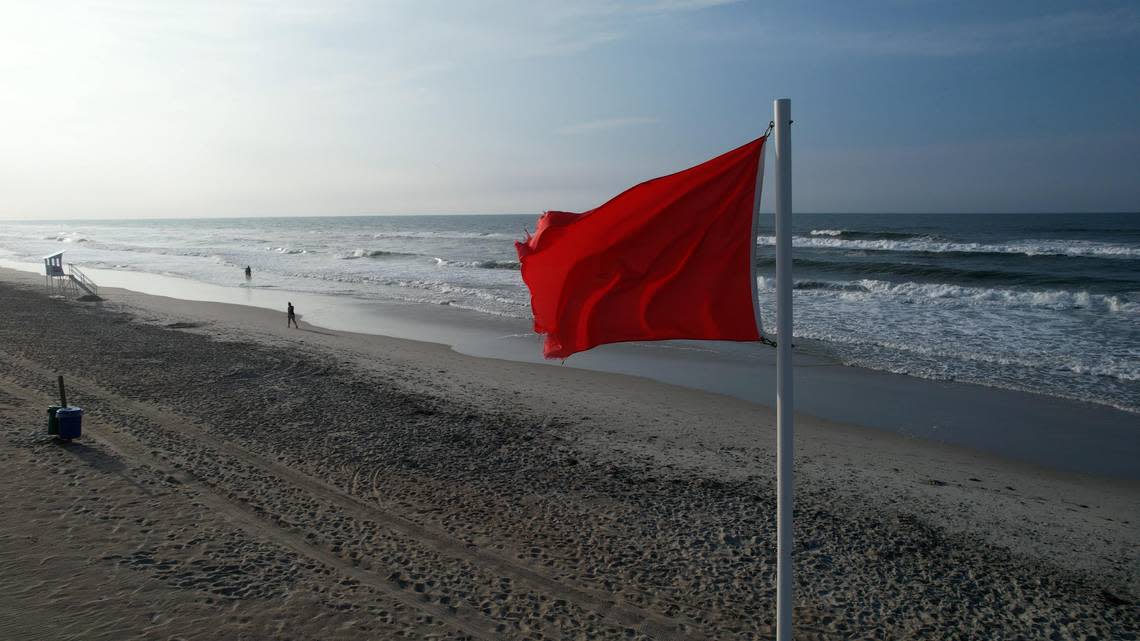Here’s what colored flags at North Carolina and other U.S. beaches mean. How to stay safe.
If the Bogue Inlet Pier on Emerald Isle and the fire trucks on Oak Island are flying yellow flags, it’s not to emphasize that the sun is out.
Communities along the length of the North Carolina coast use the five-flag system developed more than two decades ago by the National Weather Service, NOAA and the U.S. Lifesaving Association to quickly convey information about hazards on U.S. beaches.
Different towns display the flags in various ways; they may appear at beach-access areas, on piers and public-safety vehicles or be mounted on lifeguard stands. Current information also is available for each area of the coast through the National Weather Service and is often shared by local governments on their web pages.
Here’s what the flags mean:
▪ Two red flags or one flag with two red bars means the water is closed for swimming, usually because of the extreme risk of powerful rip currents that can quickly trap and pull swimmers far from the beach. Double-red days are most often seen when a hurricane is approaching, generating big seas and strong currents.
While walking along the water’s edge is permissible, swimming on double-red days is illegal and can result in an arrest or citation from local law enforcement, which doesn’t want visitors or rescuers to be harmed.
▪ One red flag indicates high hazard for swimmers, because of heavy surf and/or strong currents.
▪ Yellow flags indicate moderate surf and/or currents; rip currents may be present though not as strong as on red-flag days.
▪ Green flags indicate calm conditions, but beachgoers should still be cautious, because rip currents can develop any time.
▪ Purple flags indicate stinging marine life in the water, on the beach, or both. These could be jellyfish, stingrays, Portuguese man-o-wars or other sea creatures.

How flag colors are determined, displayed
William Matthias, interim chief of the Emerald Isle Fire Department, which includes Ocean Rescue, said his town never displays the green flag because it gives people a false sense that swimming in the ocean is perfectly safe. There is always the potential for rip currents.
Matthias said Emerald Isle displays 30 flags along its 12 miles of beachfront, so that anybody standing on the beach can face the shore and spot one.
The town also has added two yellow beach-hazard signs this summer, equipped with LED lights that are set to flash under red-flag conditions. Those are at the two largest public beach-access areas in the town.
Like other beach towns, Emerald Isle decides what color flag to fly based on National Weather Service advisories issued daily around 4 a.m. The flags fly 24/7 and are changed, if needed, between 8 a.m. and 10 a.m. each day.
June 28,2023- conditions have calmed for the ocean. Local conditions show a favorable wind this morning and organized wave sets.
The NWS has issued a moderate rip current risk for our area today. Yellow flags will be flying for Emerald Isle. #emeraldisle #nicematters pic.twitter.com/fwjrNPySgC— Town of Emerald Isle (@townemeraldisle) June 28, 2023
Increased rip current calls at NC beaches
Matthias said Wednesday was the first day that Emerald Isle has had a yellow flag — changed from a red one — in about a week.
“We’ve had some pretty severe weather,” Matthias said, such as the low-pressure system that sat over the state last week generating wind and rain and kicking up the surf.
Between April 1 and May 31, Matthias said, Emerald Isle Beach Rescue had been dispatched on 11 rescue calls and conducted 45 welfare checks, meaning a swimmer looked like they were in distress.
Swimming in a pool isn’t the same as swimming at a beach with crashing waves, winds and dangerous #ripcurrents. Obey beach flags if they're in your area, and learn how to escape a rip current if you're caught. https://t.co/9C3kG4NjL2 can help you #KnowBeforeYouGo! pic.twitter.com/p7TprxlRL1
— National Weather Service (@NWS) June 20, 2023
In addition, Matthias said, during that period rescue crews had engaged 864 times with beachgoers to warn them that they had set up their beach gear directly in front of a rip current or close to one.
“They come over the dune with their chairs and their gear and they see a place where the water looks flat,” Matthias said. “They set up right in front of that, thinking it’s the safest place. Actually, that’s the most dangerous place, because there’s a rip current there flattening out the waves. That’s going to take you all the way to the other side of the sandbar.”
In recent years, Emerald Isle and other beach communities have been working with local real estate companies to give renters information about how to spot rip currents and how to survive them when they check in for their vacation stays. Local schools also share the information with students, who Matthias said are often more safety-conscious than their parents.
“The kids, they pay attention. If they come across the dune and see a red flag, they’ll tug on their parent’s sleeve and say, ‘We’re not going in the ocean today.’”



